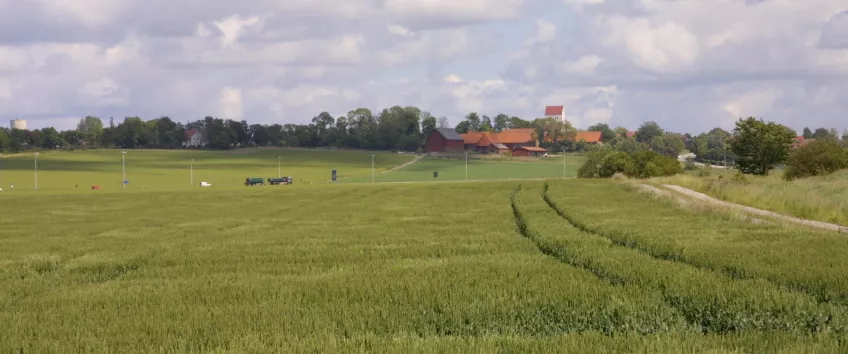BioInsure
Conserving biodiversity and ecosystem services as insurance against the risks of increasing weather variability (2018 - 2020)
Climate change has been heralded as presenting Swedish agriculture with opportunities, particularly: a longer growing season, new crops and higher yields. However, the risks associated with crop production will increase if the weather (for example daily rainfall and temperatures) becomes more variable, because it would bring about more frequent dry or wet conditions, as well as more frequent or more intense extreme weather events. The summer drought in 2018 lead to major losses for Swedish agriculture. This highlights the need for adapting agriculture to the negative effects of extreme weather events, as these markedly reduce yields and profits.
One way to adapt agriculture to climate change is conserving soil organic carbon through favourable agricultural practices. This will not only increase agriculture’s resilience to extreme weather conditions, but also mitigate climate change through increased carbon sequestration in soil.
Why should we increase soil carbon?
More soil carbon does not only mean less carbon in the atmosphere, but is also an indicator of soil health. Soil with high carbon content supports more biodiversity and tends to have better water holding capacity, more nutrients and is less susceptible to erosion. Thus, soil carbon can be seen as part of the farm’s natural capital. As for other types of capital, the natural capital should be managed and maintained so that its value (that is ability to generate ecosystem services in the future) does not diminish.
BioInsure – quantifying soil carbon’s insurance value
Good soil health and high carbon content can help agriculture better adapt to climate change, such as the expected increase in the frequency of drought or excessive precipitation. With the help of long-term soil fertility experiments, we can model how changes in soil organic carbon content affects crop yields for different temperature and precipitation patterns over the growing season. Through these models we can determine how different management practices affect soil carbon over time, and hence the soil's resistance to extreme weather events. Adopting management practices that conserve soil carbon can strengthen farmer's long-term economy by reducing the risk of yield losses and reducing optimal fertilizer application, thereby providing natural insurance against adverse weather.
The research project VESA, which focused on the value of agricultural ecosystem services, has developed a web-based decision support tool, C-Bank. Farmers and advisors can use C-Bank to value the ecosystem services (for example moisture regulation) generated by their soil natural capital, and thereby the benefits of conserving soil carbon through adopting alternative management practices. C-bank will be further developed in BioInsure to include climate scenarios so that farmers can quantify the impacts of future weather scenarios, given different choices of current management practices, on their farming business and its resilience to climate change.
Researchers BioInsure
Financier
BioInsure is funded by the research platform BECC.
